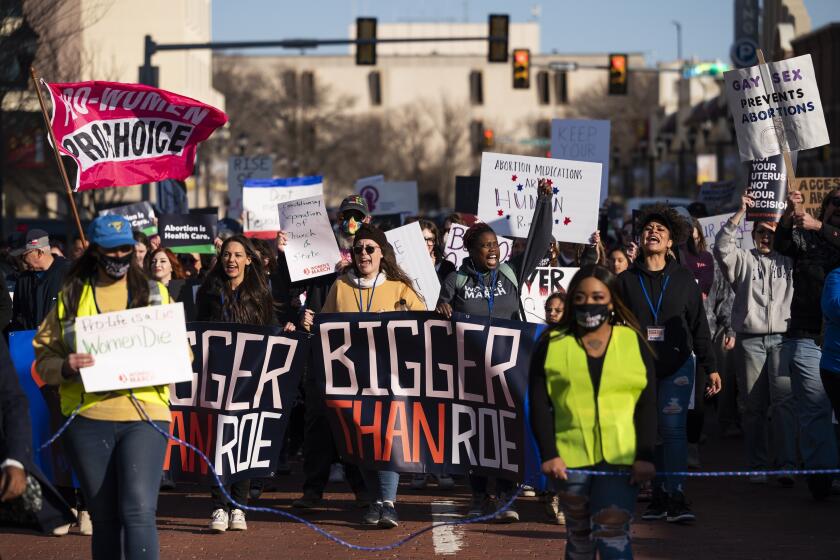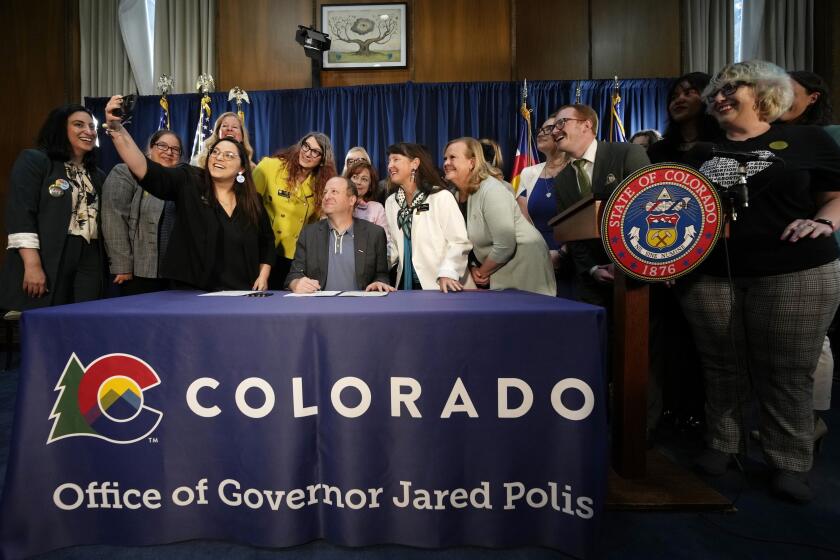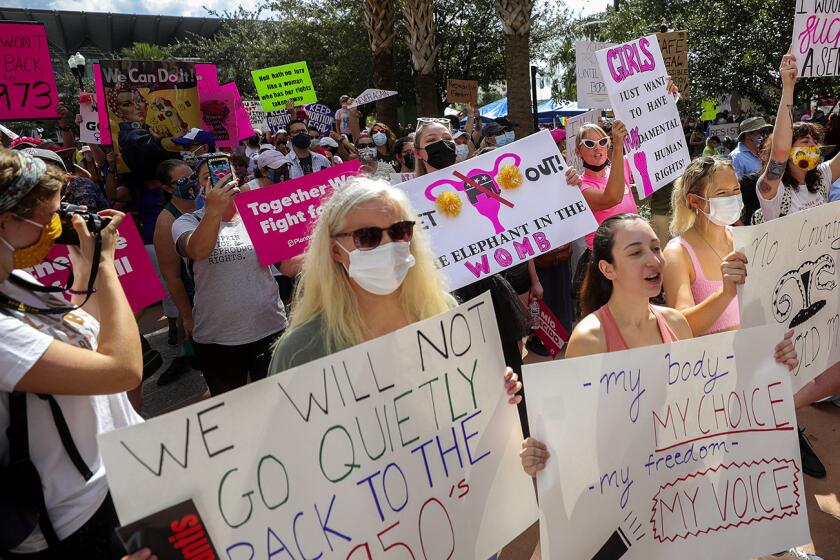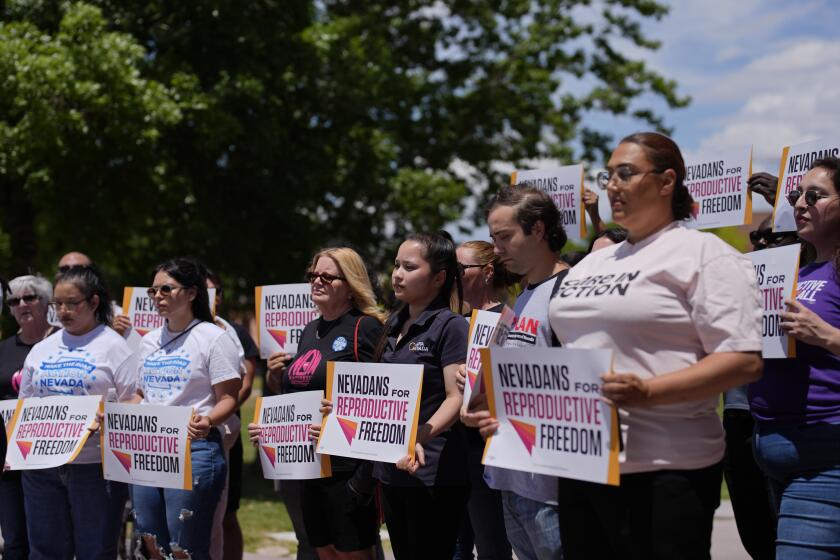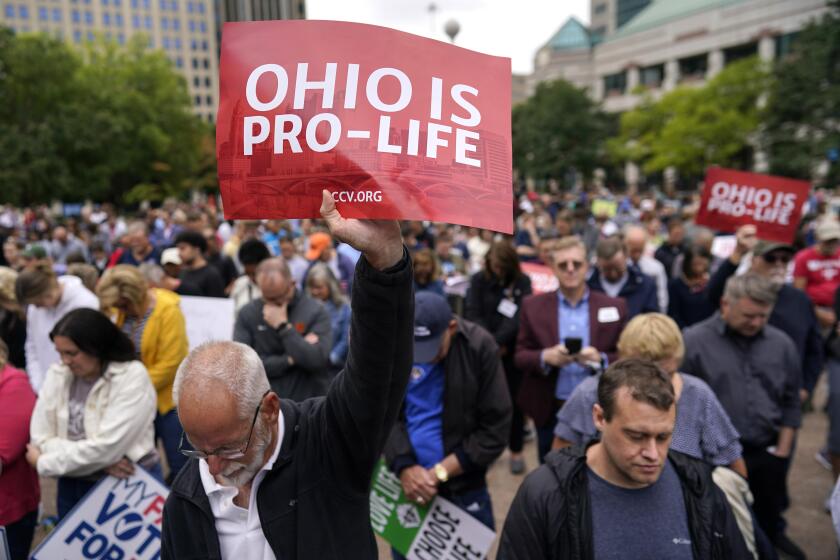Abortion access has won when it’s been on the ballot. That’s not an option for half the states
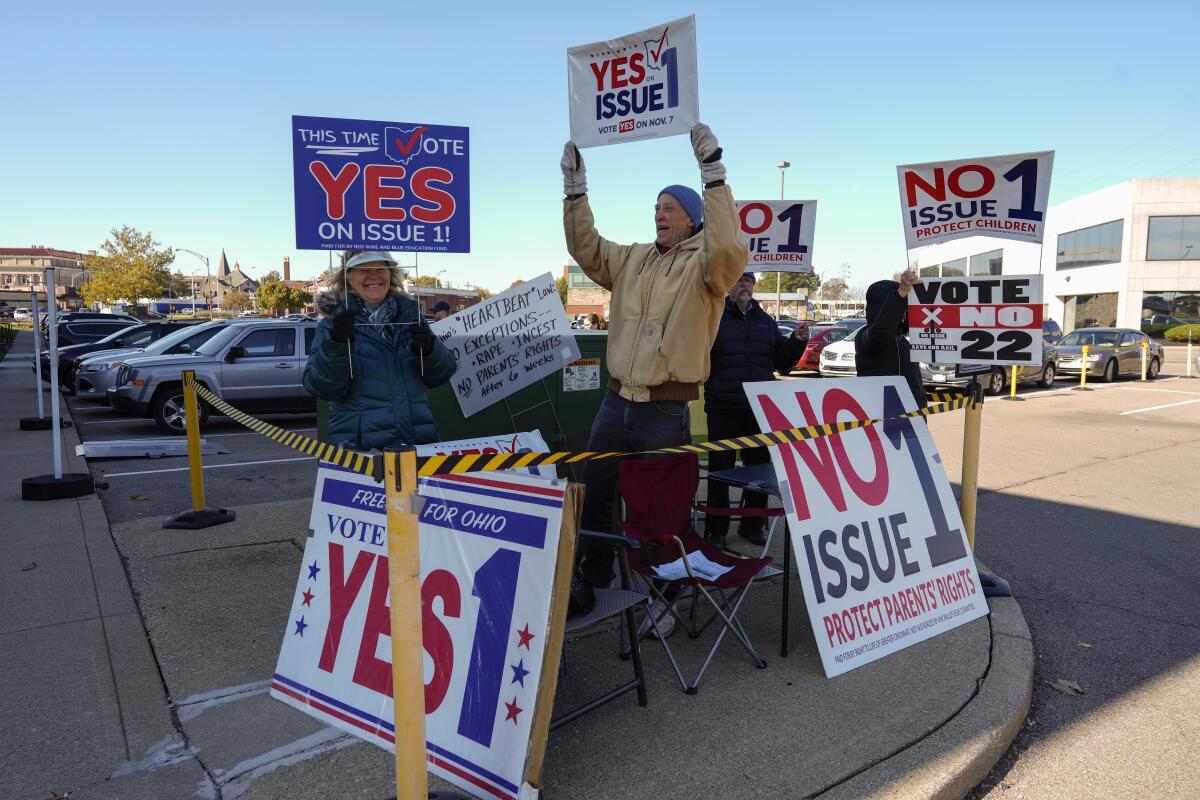
- Share via
CHARLESTON, W.Va. — Tucked inside the West Virginia Statehouse is a copy of a petition to lawmakers with a simple request: Let the voters decide whether to reinstate legal access to abortion.
The request has been ignored by the Republican lawmakers who have supermajority control in the Legislature and banned abortions in the state in 2022, shortly after the U.S. Supreme Court overturned a constitutional right to the procedure.
The petition, with more than 2,500 signatures, is essentially meaningless given the current makeup of the Legislature. But it illustrates the frustratingly limited options millions of Americans face in trying to re-establish abortion rights as the country marks two years since the Supreme Court’s ruling.
West Virginia is among the 25 states that do not allow citizen initiatives or constitutional amendments on a statewide ballot, an avenue of direct democracy that has allowed voters to circumvent their legislatures and preserve abortion and other reproductive rights in a number of states over the past two years.
Two years after the Supreme Court overturned Roe vs. Wade, the debate over abortion access is playing out in elections and the courts.
Republicans there have repeatedly dismissed the idea of placing an abortion-rights measure before voters, which in West Virginia is a step only lawmakers can take.
“It makes you wonder what they’re so afraid of,” said Democratic state Delegate Kayla Young, one of only 16 women in the West Virginia Legislature. “If they feel so strongly that this is what people believe, prove it.”
The court’s ruling to overturn Roe vs. Wade was praised by abortion opponents as a decision that returned the question to the states. Former President Trump, who named three of the justices who overturned Roe, has repeatedly claimed “the people” are now the ones deciding abortion access.
“The people are deciding,” he said during a recent interview with Fox News host Sean Hannity. “And in many ways, it’s a beautiful thing to watch.”
But that’s not true everywhere. In states allowing the citizen initiative and where abortion access has been on the ballot, voters have resoundingly affirmed the right to abortion.
Abortion rights ballot initiatives will go before Colorado and South Dakota voters this November.
Voters in seven states, including conservative ones such as Kentucky, Montana and Ohio, have either protected abortion rights or defeated attempts to curtail them in statewide votes over the past two years. Reproductive rights supporters are trying to put citizen initiatives on the ballot in several states this year.
But voters don’t have a direct say in about half the states.
This is particularly true for those living in the South. Republican-controlled legislatures, many of which have been heavily gerrymandered to give the GOP disproportionate power, have enacted some of the strictest abortion bans since the Supreme Court ruling while shunning efforts to expand direct democracy.
States began adopting the initiative process during the Progressive Era more than a century ago, giving citizens a way to make or repeal laws through a direct vote of the people. Between 1898 and 1918, nearly 20 states approved the citizen initiative. Since then, just five states have done so.
“It was a different time,” said John Matsusaka, professor of business and law at USC. “There was a political movement across the whole country when people were trying to do what they saw as good government.”
The court has paved the way for a ban after six weeks of pregnancy, before many women know they are pregnant, but voters will soon have a say.
Some lawmakers argue citizen initiatives bypass important checks and balances offered through the legislative process. In Tennessee, where Republicans have gerrymandered legislative districts to give them a supermajority in the statehouse, House Majority Leader William Lamberth likened ballot measures to polls rather than what he described as the Legislature’s strict review of complicated policy-making.
“We evaluate bills every single year,” he said.
As in West Virginia, abortion-rights supporters or Democratic lawmakers have asked Republican-controlled legislatures in a handful of states to take the abortion question straight to voters, a tactic that hasn’t succeeded anywhere the GOP has a majority.
“This means you’re going to say, ‘Hey Legislature, would you like to give up some of your power? Would you like to give up your monopoly on policymaking?’” said Thad Kousser, professor of political science at USC San Diego. “You need a political momentum and then have the process cooperate.”
In South Carolina, which bans nearly all abortions, a Democratic-backed resolution to put a state constitutional amendment on the ballot never got a hearing this year. Attempts to attach the proposal to other pieces of legislation were quickly shut down by Republicans.
Nevada and Arizona are among several states working to get abortion rights on ballot measures in 2024
“If you believe you are doing the right thing for all the people of South Carolina — men and women and babies — you should have no problem putting this to the people,” said Democratic state Sen. Margie Bright Matthews, alleging that Republicans fear they would lose if the issue went directly to voters.
In Georgia, Democratic state Rep. Shea Roberts said she frequently fields questions from her constituents asking how they can get involved in a citizen-led ballot measure. The interest exploded after voters in Kansas rejected an anti-abortion measure from the Legislature in 2022 and was rekindled last fall after Ohio voters overwhelmingly passed an amendment codifying abortion rights in the state’s constitution.
Yet when she has brought legislation to create a citizen initiative process in Georgia, the efforts have been ignored inside the Republican-controlled Legislature.
“Voters are constantly asking us why we can’t do this, and we’re constantly explaining that it’s not possible under our current constitution,” Roberts said. “If almost half of states have this process, why shouldn’t Georgians?”
The contrast is on stark display in two presidential swing states. Michigan voters used a citizen initiative to enshrine abortion rights in their state constitution in 2022. Voters in neighboring Wisconsin don’t have that ability.
Instead, Wisconsin Democrats, with a new liberal majority on the state Supreme Court, are working to overturn Republican-drawn legislative maps that are among the most gerrymandered in the country in the hope of eventually flipping the Legislature.
Analiese Eicher, director of communications at Planned Parenthood Advocates of Wisconsin, said a citizen-led ballot measure process would have been especially valuable for her cause.
“We should have legislators who represent their constituents,” she said. “And if they don’t, there should be another option.”
Voters have sided with abortion rights supporters every time the issue has been directly on the ballot since the Supreme Court overturned Roe vs. Wade.
In West Virginia, Steve Williams acknowledges the petition he spearheaded didn’t change minds inside the Legislature.
But the Democratic mayor of Huntington, who is a long-shot candidate for governor, said he thinks state Republicans have underestimated how strongly voters believe in restoring some kind of abortion access.
Republican leadership has pointed to a 2018 vote in which just under 52% of voters supported a constitutional amendment saying there is no right to abortion access in the state. But Williams said the vote also had to do with state funding of abortion, which someone could oppose without wanting access completely eliminated.
The vote was close, voter participation was low and it came before the Supreme Court’s decision that eliminated a nationwide right to abortion. Williams said West Virginia women weren’t facing the reality of a near-total ban.
“Let’s face it: Life in 2024 is a heck of a lot different for women than it was in 2018,” he said.
Kruesi, Fernando and Willingham write for the Associated Press. Kruesi reported from Nashville and Fernando from Chicago. AP writer Jeffrey Collins contributed to this report from Columbia, S.C.
More to Read
Sign up for Essential California
The most important California stories and recommendations in your inbox every morning.
You may occasionally receive promotional content from the Los Angeles Times.
